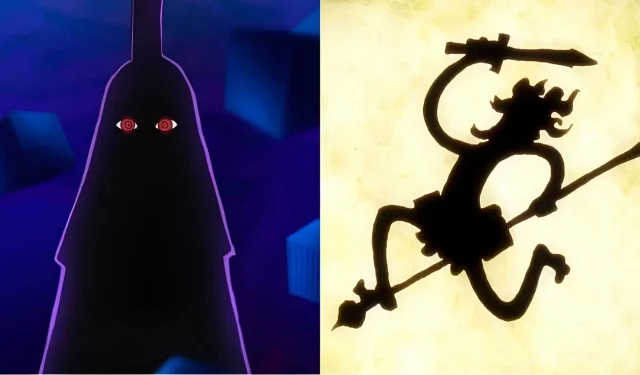One Piece presents a fascinating dichotomy between its most significant hero and villain, as Luffy and Imu can be seen as two sides of the same coin. Imu, the enigmatic figure seated atop the Empty Throne, contrasts sharply with Luffy, the determined aspirant for the title of Pirate King. Their relationship could symbolize an ancient cosmic balance that has influenced the world for generations.
At the core of this dynamic is the legend of Nika, the Sun God, who epitomizes the dual forces of light and darkness, creation and destruction, as well as control and freedom. Luffy’s transformative Gear 5 ability reveals new dimensions of his power and adds layers to the mystery surrounding Imu, hinting at a profound connection between these seemingly opposing forces within the overarching narrative of One Piece.
Disclaimer: The views and interpretations offered in this article are solely the author’s.
Imu and Luffy: Reflections of a Fallen God and the Resurrection of Freedom in One Piece
The idea that Imu and Luffy are two manifestations of a single foundational entity becomes more compelling as their contrasting powers reveal complementary truths. Through Luffy’s awakened Devil Fruit, he can reshape his environment into whimsical, cartoonish forms that evoke joy and liberty. In stark contrast, Imu appears to manipulate reality towards a darker, more twisted end.
This duality echoes ancient myths where creator deities often have destructive counterparts, representing conflicting facets of the same divine essence. Imu’s intense fascination with the oversized straw hat stored in the Mariejois freezer may hint at something deeper—a nostalgic reminder of a past when they embodied true freedom before tragedy corrupted their purpose.
The relentless pursuit of the Nika fruit by the World Government suggests an advanced understanding of its significance—principles that only the original bearer could truly grasp. The existence of Devil Fruits likely symbolizes the universe’s ongoing struggle for equilibrium.
The term “Devil Fruit”itself is particularly telling. It was likely coined by Imu as part of his propaganda, distorting the narrative of a power that he once wielded but has since misused. The enigma of the Void Century—a period erased from history—may signify the moment Imu transitioned from a liberator to a tyrant.
“Binks’ Sake”and the Universal Struggle: Imu, Nika, and the Cost of Power in One Piece
The widely recognized song “Binks’ Sake”throughout the series appears to cryptically reference this ancient conflict. The character Don, who embarks on a journey, may symbolize Joy Boy, a historic figure intricately linked to Luffy’s fate. The act of delivering sake could represent the passing of wills, emphasizing the inherited purpose that resonates throughout the themes of One Piece.
When the lyrics speak of bidding farewell to a cherished town, it may recount the loss that led Imu down his dark path. This cosmic balance is reflected not only in the characters but also throughout the power systems in the series. For instance, Devil Fruit users sacrifice their ability to swim, Gear transformations take a toll on Luffy’s lifespan, and the Ope Ope no Mi’s ultimate ability necessitates a life-for-life exchange for immortality.
Every ability comes with inherent sacrifices—a universal law that may originate from the fateful divide between Imu and Nika. This theory adds an intriguing layer, aligning with the narrative techniques that Oda masterfully employs in his storytelling.
Oda’s antagonists often serve not as mere embodiments of evil but as distorted representations of ideals, like Doflamingo’s warped sense of freedom, Crocodile’s twisted ambitions, and Blackbeard’s dark interpretations of dreams. Imu could epitomize this conflict, once a champion of freedom, now transformed into freedom’s fiercest adversary.
Conclusion
The anticipated dawn in One Piece may signify more than just Luffy’s triumph; it could herald a reconciliation. This would involve merging the light and dark elements of Nika into a harmonious whole. The ultimate confrontation might not culminate in destruction but in understanding—and possibly, redemption.
The treasure that Roger uncovered, the One Piece itself, might embody the truth of this cosmic duality, offering the key needed to restore balance to a divided world. As the series approaches its climax, it is increasingly likely that Luffy’s most formidable challenge will not entail overcoming a physical foe, but reconciling with a lost aspect of the profound power he represents.


